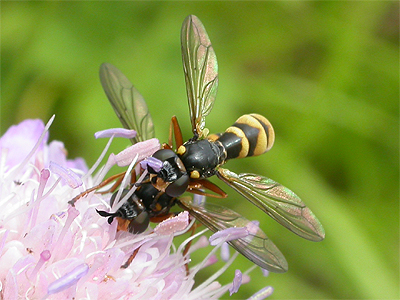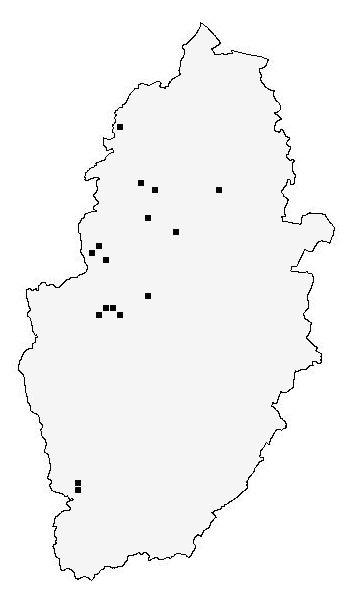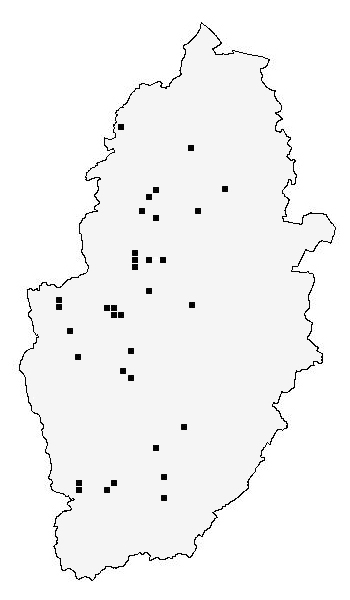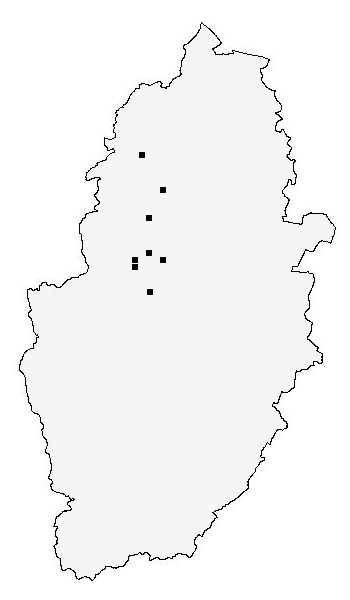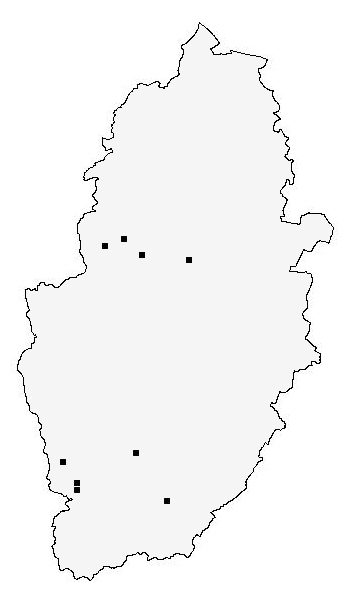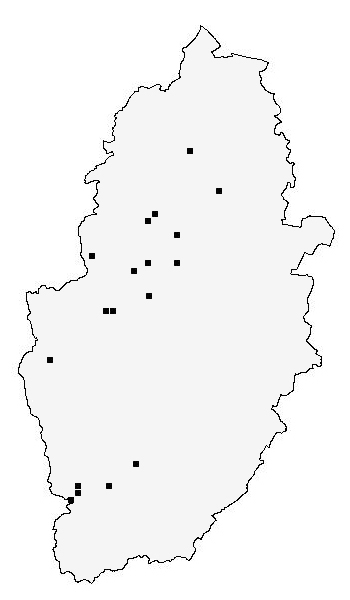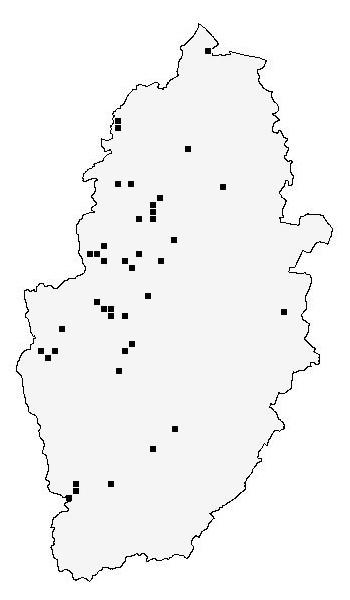| The egg
hatches and the larva feeds off the host's abdominal
contents, usually for about 10 days, effectively
hollowing it out and filling almost the entire abdominal
cavity. The larva pupates inside the host becoming an
adult fly the next summer. Parasitised bees appear to
change the behaviour and tend to stay outside the nest
more than other workers, often remaining outside even in
very cold weather. Known
species with Nottinghamshire records
A total of 11 species are
known from Nottinghamshire, but there are modern
(post-1960) records for just six of these. These are
illustrated below and for which we provide distribution
maps, based on records we have been sent by numerous
invertebrate recorders and organisations. One species
(Thecophora atra) is believed not
to have been seen in Nottinghamshire since the 1950's, so
just fails to qualify as having produced a modern record.
A full list of Conopidae
recorded in VC56 Nottinghamshire is listed below.
Conops
flavipes (Linnaeus, 1758), Conops
quadrifasciatus (De Geer, 1776) , Conops
vesicularis (Linnaeus, 1761), Conops
strigatus (Wiedemann in Meigen, 1824), Myopa
buccata (Linnaeus, 1758), Myopa
polystigma (Rondani, 1857), Myopa
occulta (Wiedemann in Meigen, 1824), Myopa
testacea (Linnaeus, 1767), Physocephala
rufipes (Fabricius, 1781), Sicus
ferrugineus (Linnaeus, 1761) and Thecophora
atra (Fabricius, 1775).
Species with historical
records only, include Conops strigatus, Myopa
buccata, Myopa polystigma, Myopa
occulta and Thecophora atra.
|


